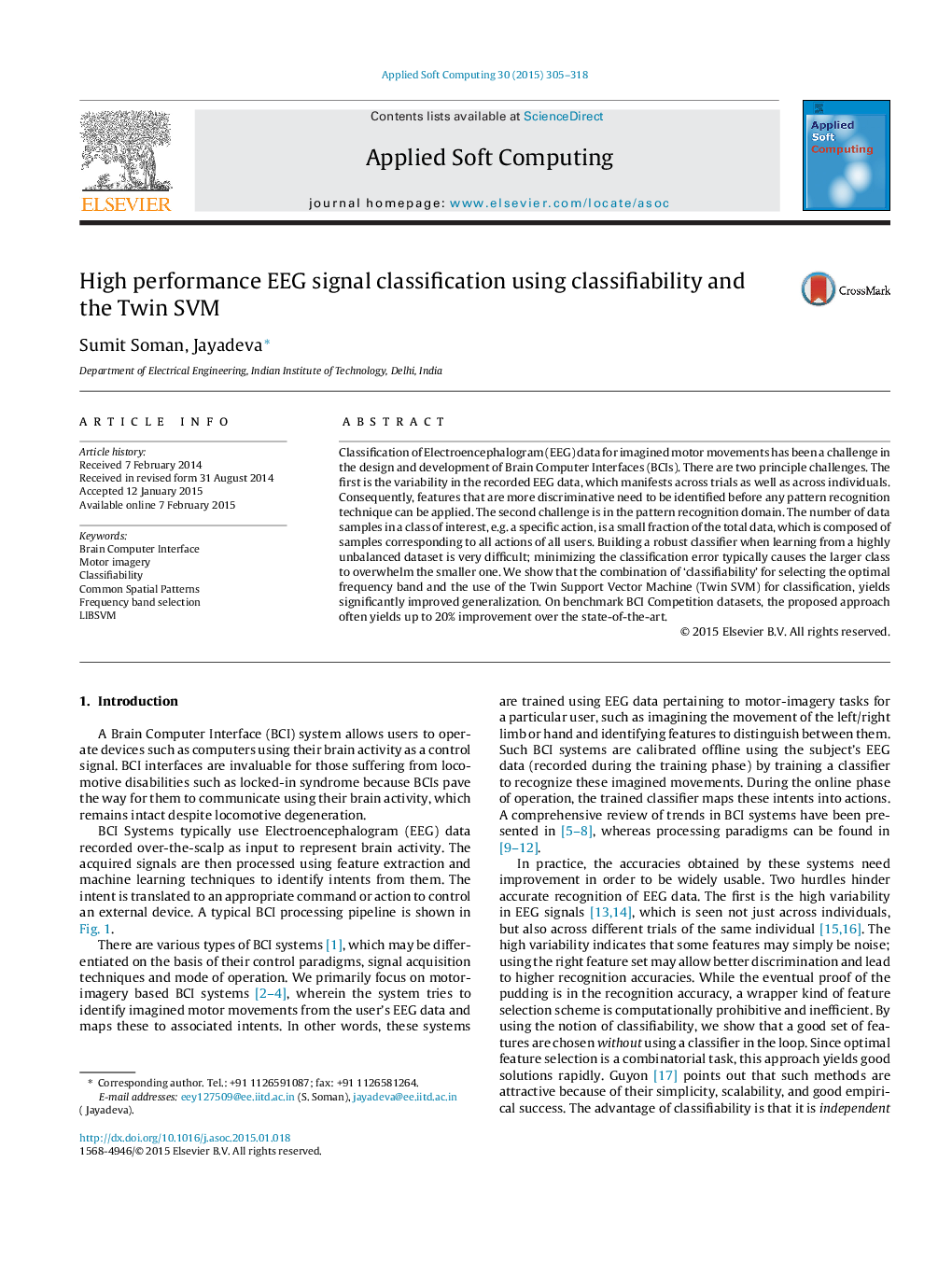| کد مقاله | کد نشریه | سال انتشار | مقاله انگلیسی | نسخه تمام متن |
|---|---|---|---|---|
| 495066 | 862815 | 2015 | 14 صفحه PDF | دانلود رایگان |

• Use of the classifiability metric to select discriminative frequency bands.
• Use of the Twin SVM to learn unbalanced datasets with low error rates.
• Improvements of up to 20% over state-of-the-art.
Classification of Electroencephalogram (EEG) data for imagined motor movements has been a challenge in the design and development of Brain Computer Interfaces (BCIs). There are two principle challenges. The first is the variability in the recorded EEG data, which manifests across trials as well as across individuals. Consequently, features that are more discriminative need to be identified before any pattern recognition technique can be applied. The second challenge is in the pattern recognition domain. The number of data samples in a class of interest, e.g. a specific action, is a small fraction of the total data, which is composed of samples corresponding to all actions of all users. Building a robust classifier when learning from a highly unbalanced dataset is very difficult; minimizing the classification error typically causes the larger class to overwhelm the smaller one. We show that the combination of ‘classifiability’ for selecting the optimal frequency band and the use of the Twin Support Vector Machine (Twin SVM) for classification, yields significantly improved generalization. On benchmark BCI Competition datasets, the proposed approach often yields up to 20% improvement over the state-of-the-art.
Figure optionsDownload as PowerPoint slide
Journal: Applied Soft Computing - Volume 30, May 2015, Pages 305–318